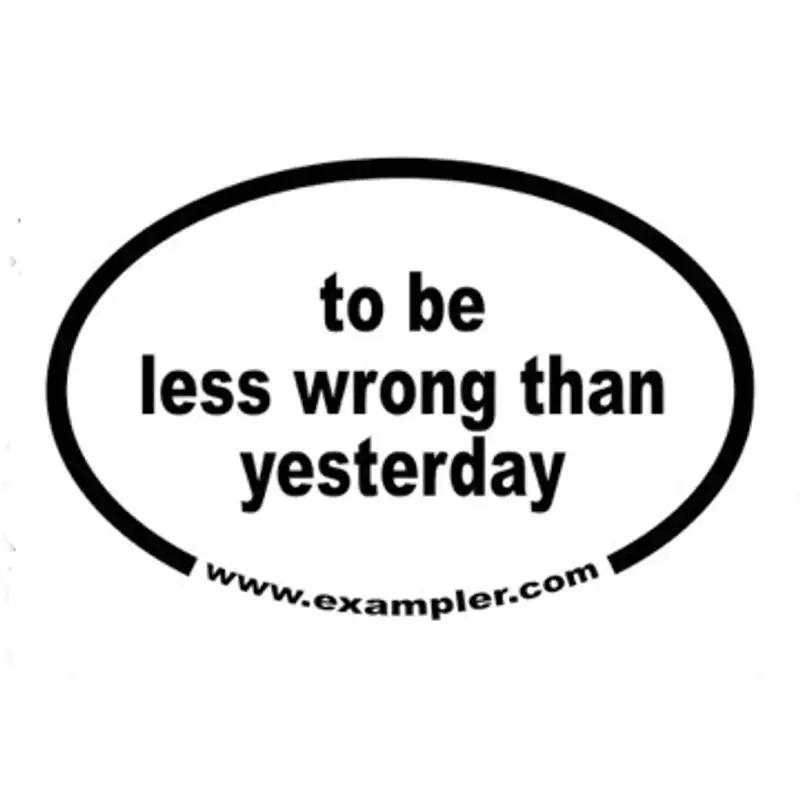All Episodes
Displaying 31 - 55 of 55 in total
BONUS: Seeing like a personality survey
My goal is to help you understand what it means when you see a headline like “Scientists find that people on the political right are less open to experience than peopl...

Personality and destiny
A summary of the "situationist" faction of personality psychology, which holds that behavior is strongly influenced by the situation. Knowing someone's personality typ...

This is not an episode (a diversion into what makes explanations good)
Not an episode that suggests ideas for people to try in software projects. Instead, I am reacting to the book /Communities of Practice/, whose ideas are not explained ...

Legitimate peripheral participation: the book and the idea
"Legitimate peripheral participation" is based on observations about how novices learn in the presence of experts. The novel bits are that novices learn better from fe...

/Talking About Machines/: copier repair technicians and story-telling
Julian Orr tagged along with ~1990-era photocopier repair technicians and made some observations that seem to apply to modern software development. This episode discus...

/Seeing Like a State/, part 3: the users, the clients
In this episode, I hope to give you some helpful hints about *actually* improving the lives of the users of the software you create. Or, if you’re the kind of “change ...

/Seeing Like a State/, part two: recognizing your High Modernist eidolon
We in software are prone to "Seeing Like a State". It's easy to adopt that perspective despite good intentions. How can you realize that's what you're doing?

E17: James C. Scott’s /Seeing Like a State/, part one
An introduction to the core ideas of Scott's /Seeing Like a State/. Three examples. Nothing about software yet.

Interview: Glenn Vanderburg on engineering
In episode 12, I used the chapter in /Image and Logic/ about Monte Carlo methods to argue that analogies of software development to engineering are not helpful. Glenn ...

Interview: Mark Seemann on /Blindsight/ and /Thinking, Fast and Slow/
How two books influenced Danish software designer Mark Seemann to get the non-rational part of his brain working on his side.

BONUS: Lord, preserve us from totalizing systems
Why *are* teams stuck in hierarchical and commercial exchange economies, when they'd be happier and just as productive if the example of the previous episode were the ...

David Graeber’s three kinds of economies
David Graeber claims every society contains a mixture of variations on three types of economies: hierarchy, exchange, and "baseline communism". The context for softwar...

David Graeber, gift economies, and open source projects
An introduction to gift economies, based on the writings of anthropologist David Graeber. A critique of Eric Raymond's "Homesteading the Noosphere", which – I claim – ...

Analogies in and around /Image and Logic/
A comparison of how Monte Carlo analogies and software analogies played out. Plus: a suggestion that Galison's "trading zone" analogy in /Image and Logic/ has an impor...

Mini-episode: What does Galison mean by “tradition”?
Galison's definition of a scientific tradition is continuity over time of skills and technology, people, and standards of evidence. How does that apply to software? So...

Mini-episode: Galison doubts Kuhn’s idea of scientific revolutions
A brief episode. Thomas Kuhn’s 1962 book /The Structure of Scientific Revolutions/ was enormously influential. In /Image and Logic/, Galison argues that Kuhn was wrong...

Galison’s /Image and Logic/, Part 2: The Trading Zone
Galison uses the metaphor of cultures meeting to trade to describe how, say, experimentalists and theorists collaborate. He describes procedures, machines, and diagram...

Galison’s /Image and Logic/, Part 1: The stickiness of experimental tradition
Peter Galison's book, /Image and Logic/, has several themes. One traces the multi-decade competition between two traditions in experimental particle physics. I discuss...

E7: Imre Lakatos on what persuades scientists to risk their careers
Imre Lakatos intended to give rules for when scientists would be *rational* to switch to a new research program. At this, he probably failed, but I think he provides g...

Interview: James Shore and Boundary Objects
Episode one described the idea of “boundary objects.” In this episode, I interview James Shore as he describes how he’s used the idea in his own work as an old-school ...

Interview: Downsides of packages, upsides of jUnit (with Elisabeth Hendrickson and Chris McMahon) ("Packages", Part 4)
Final episode on Fujimura's "packages": how the theory part of a package can cause harm. Interview with Elisabeth Hendrickson and Chris McMahon, who don't think jUnit ...

Theories of What? or: Richard Rorty Weighs in on TDD ("Packages", Part 3)
Why did so many biologists shrug and accept the proto-oncogene theory of cancer, while most programmers rejected TDD – and rather fiercely? Using an idea from Richard ...

jUnit and What Makes a Successful Tool ("Packages", Part 2)
What characteristics make a tool or technology successful? This is the second of four episodes on Joan Fujimura’s idea of “packages” for spreading theory and techno...

E2: Viruses, Cancer, TDD, and "Packages": Part 1
The first of three episodes discussing how Joan Fujimura's ideas about technology and theory diffusion apply to test-driven design and other approaches to doing software.

E1: Boundary Objects
Boundary objects are an idea from the sociology of science. They are about how people use ambiguous nouns – or things – to coordinate the work of people with different...

